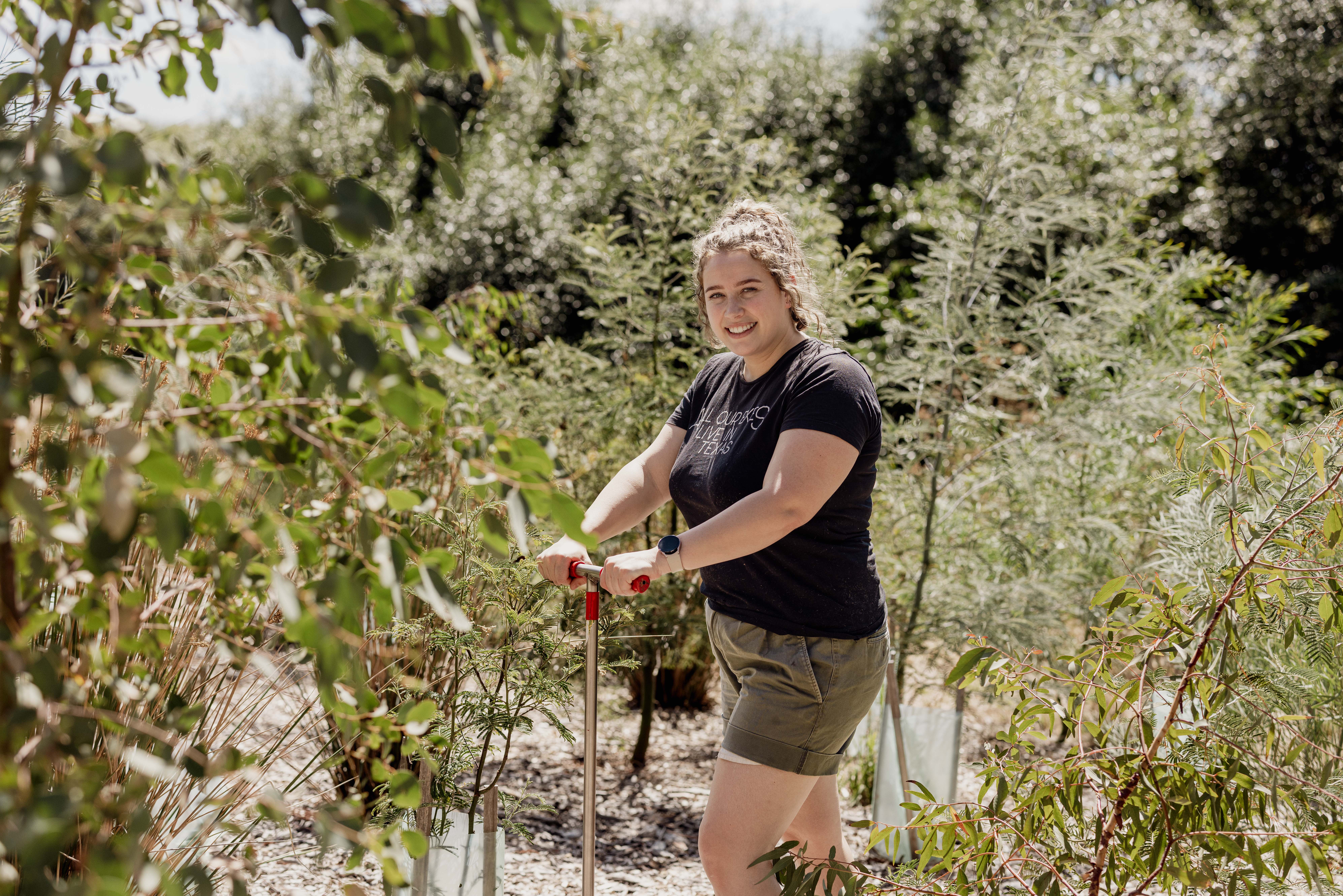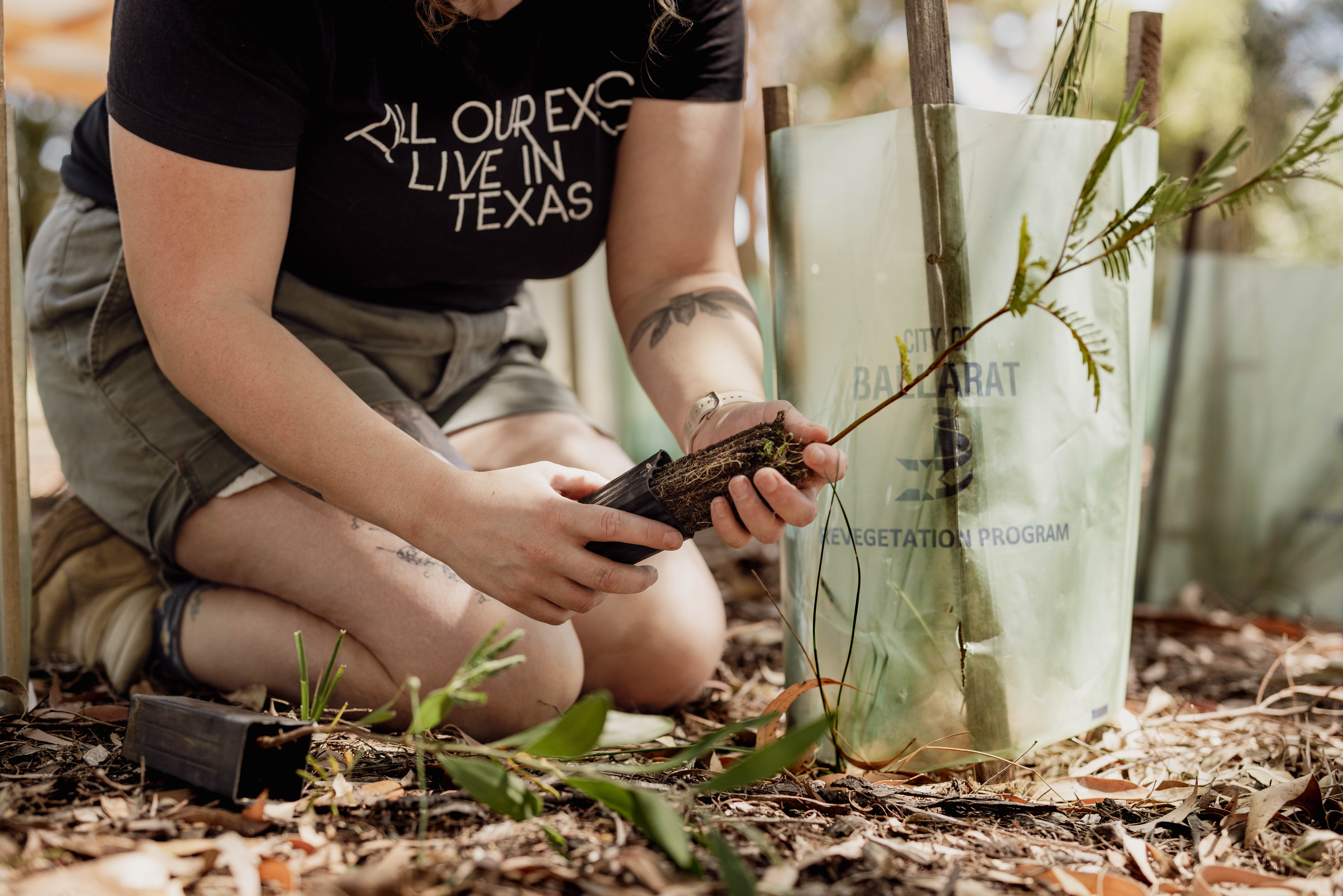Restoring biodiversity along the Yarrowee

On this page
Ballarat environmental and Landcare groups are calling for community members and groups to help them plant almost 40,000 native shrubs, plants, grasses and trees along the Yarrowee River over the next two years.

“Jump in and have a crack at putting a plant in the ground.”
That’s the advice Kate Martin of the Yarrowee Leigh Catchment Group has for the Ballarat community ahead of a massive project in which more than 39,500 native shrubs, grasses and trees will be planted at sites along the Yarrowee River and other creeks and rivers.
The Urban Ripple project will bring together volunteers from six environmental and Landcare groups across the municipality to ecologically restore 13 sites, which will enhance the natural environment for residents who access these areas.
However, the volunteer power of all these groups combined will not be enough to get the job done within two years — the required timeframe specified by the Department of Energy, Environment and Climate Action (DEECA), which awarded $701,000 for the project through a Green Links grant.
“We need a workforce of people and community groups to sign up and participate,” Kate says.
Getting the community involved
While the Bunanyung Landscape Alliance in partnership with the Yarrowee Leigh Catchment Group applied for the DEECA grant funding, there are several local Landcare and Friends groups involved in the Urban Ripple project. These include: Friends of Canadian Corridor, Wattle Flat Pootilla Landcare Group, Friends of Specimen Vale, Friends of the Yarrowee, Upper Williamsons Creek Landcare Group and Napoleons Enfield Landcare Group. Each group will be leading the delivery of the project at their delegated sites.
The Friends of the Canadian Corridor (FoCC) are responsible for four of the sites. Due to the small size of the FoCC, President Bob Hartmann says the group have had to think laterally.
“We’ve been reaching out to community groups in the area to get involved, and inviting them to participate in tree planting days,” Bob says.
Planting days will give residents an opportunity to participate in the restoration of the environment and leave something behind for future generations.
It’s also a great way to learn more about the local environment and meet other like-minded people.
Restoring biodiversity
Each of the 13 sites that will be restored through the Urban Ripple project requires a different ecological approach.
“Some sites will require restoration of ground cover, while others will need a focus on trees,” Kate says.
Urban Ripple commissioned ecological surveys to determine the approach and plants required at different sites. The company that did those surveys provided planting lists and recorded the number of species to go into those sites. The project will also help improve habitats for koalas, platypus and wedge-tailed eagles.

The plants will come from a variety of sources including the City of Ballarat Indigenous Community Nursery, Wadawurrung Traditional Owners Aboriginal Corporation, along with community members growing the plants at home.
The City of Ballarat will also provide the Urban Ripple project with officer support and material resources. City of Ballarat officers will assist with site preparation, along with follow-up watering and maintenance once the plants are in the ground.
Kate encourages as many community members and community groups to get involved in the Urban Ripple project as possible to ensure the next generation can continue to enjoy the biodiversity along the Yarrowee.
To get involved with the Urban Ripple project, email Kate Martin at projectofficer@leighcatchmentgroup.org
The Urban Ripple project aligns with the recently adopted City of Ballarat Biodiversity Strategy: Healing Country Together.